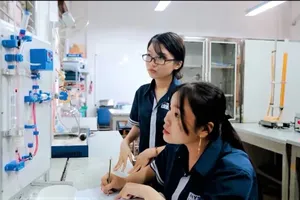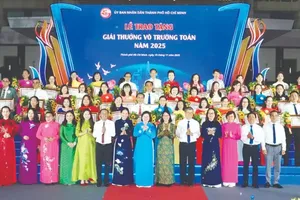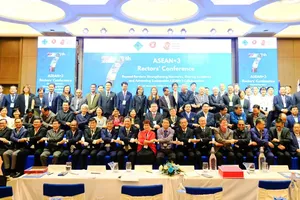 |
In its proposal to the Prime Minister, the Ministry of Education and Training expected to develop a Law on Teachers for consideration and inclusion in the legislative program for the period 2022-2025.
According to statistics from the Ministry of Education and Training, by the end of the school year 2021-2022, the country has about 1.6 million teachers and education administrators working in both public and non-public schools. Teaching staff are considered the largest workforce in the total number of civil servants and public employees, accounting for about 70 percent of the total non-business payroll of the country.
In addition, more than 900,000 retired teachers have been still contributing to the education sector; nearly 115,000 students are studying at universities and pedagogical colleges across the country. Despite the above-mentioned factors, the distribution of teachers between urban and rural is even due to difficulties in recruitment, the lack of policies to attract good people to the pedagogy sector, and teachers’ low income.
From that fact, the Ministry proposed a draft Law on Teachers stipulating a number of new contents such as special consideration cases in recruitment, regulations on job transfer in accordance with the specific characteristics of the education sector, policies on training, fostering, honoring and rewarding teachers and regulations on housing subsidies, medical benefits, and retirement benefits.
In particular, policies are developed towards the goal of "doing more, receiving more reward", and "having a priority regime for those who achieve it" to eliminate the thinking of equal treatment on remuneration - one of the important changes to encourage teaching staff; thereby, promoting teachers’ work efficiency.
At the same time, in its proposal of the Decree regulating the preferential allowance for teachers, the Ministry of Education and Training proposed the highest preferential allowance for teachers directly teaching at public preschools in ethnic minority areas, mountainous areas, island and border communes, and a preferential allowance of 70 percent for public preschool education institutions. Plus, teachers of primary schools in ethnic minority areas, mountainous areas, island communes, and border areas will be entitled to a 50-percent preferential allowance and 35 percent for the remaining areas.
Similarly, teachers working at junior high schools, senior high schools, continuing education centers, vocational education centers - continuing education facilities in ethnic minority areas, mountainous areas, island communes, and border areas will be eligible for 35 percent preferential allowance and 30 percent for the rest of the region.
Particularly, teachers who are directly teaching at pedagogical schools, pedagogical faculties, schools of educational administrators, and teaching political subjects in vocational education institutions are proposed to receive a 40 percent preferential allowance.
In addition to the salary policy, according to the Director of the Department of Teachers and educational administrators under the Ministry of Education and Training Vu Minh Duc, it is necessary to reduce work pressure for teachers in order to attract good students to the pedagogy sector. According to him, teachers have to participate in too many activities and teachers were always up to their necks in marking and grading papers. Paperwork involves accounting for the growth of your students by tracking their progress throughout the year in addition to teaching.
From the reality in teaching, Ms. Tran Thi Thom, Vice Principal of Ernst Thalmann High School in Ho Chi Minh City’s District 1, said that the school currently focuses on mental health care activities for students. However, teachers are also one of the subjects that need to be taken care of. Dr. Pham Dang Khoa, Head of the Education and Training Department in District 3, explained that teachers feel comfortable and happy to transmit positive energy to students.
























